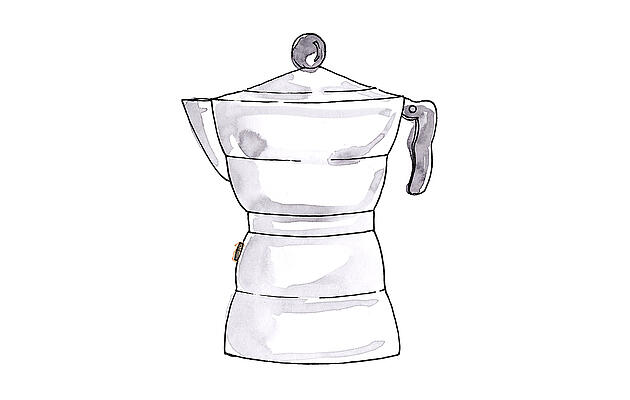
In Italy, no household is complete without this small, silver stovetop pot. Here at home, the intense, strong coffee it produces has also won many friends.
For the stovetop espresso maker, we recommend the traditional method using classic espresso beans; however, those who fancy a fruity coffee can use a lighter roast, for example café crème beans.
Our tip:
It also isn’t necessary to use all the water in the pot; the longer the water flows, the bitterer the coffee will become. Once you’ve got the amount of coffee you want, or the coffee that’s flowing into the upper chamber looks very light and pale, then it’s time to stop the brewing process.
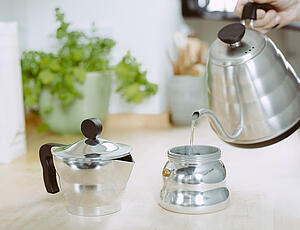
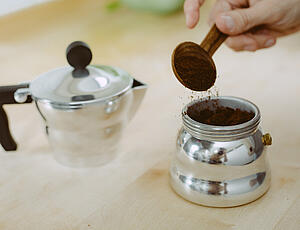
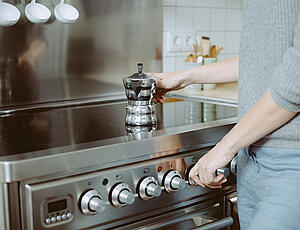
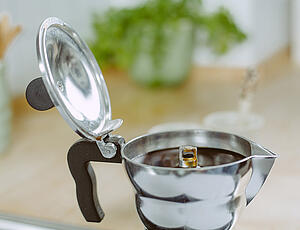
Ingredients & equipment
- A stovetop espresso maker made of aluminium or stainless steel
- Medium-fine ground coffee
- Hot water
Here’s what to do:
- Heat up the water that you’d like to use.
- With this warmed-up water, fill the lower section of the pot to just below the valve.
- Fill the metal filter up to the rim with your freshly ground coffee, pop it into the pot and make sure the edges of the filter are clean. Press down on the coffee very lightly so that it is level. That’s best done with your fingers.
- Screw the upper section onto the lower section of the pot and place it on the stove with the lid open. Set the stove to a low to medium heat.
- The heat causes the water to boil. This produces steam that pushes the water up through the filter from below. The coffee flows upwards through the funnel and into the upper chamber. The hotter the water and the stove, the quicker this process takes place.
- Once you hear a gurgling sound, it means that almost all of the water in the lower section has been pushed up through the filter. This is a signal to stop the brewing process: close the lid of the pot, remove it from the stove and run the lower section under cold water from the tap. Alternatively, you can wrap a cold cloth around the lower chamber. The resulting drop in temperature will lower the pressure in the pot.